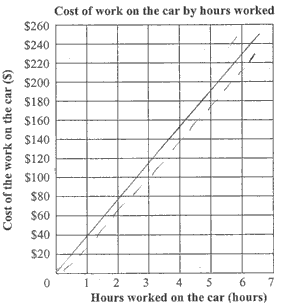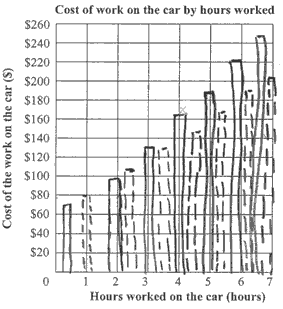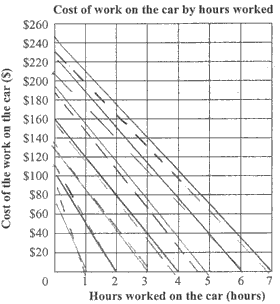Car maintenance
This task is about comparing the different costs of two garages.
Two garages charge for repairs in different ways.
- Kakariki Garage charges a standard $40 for a first look, and then $30 per hour for servicing.
- Honore's Garage charges $60 for the first look, and then $25 per hour for servicing.
| a) |
Complete the table below to work out the costs of each garage for the hours they work.
|
||||||||||||||||||||||||||||||||||||
|
b)
|
Use your results in the table above to draw and label a graph that shows the cost of using each garage over time (in hours).
|
||
|
Cost of work on the car by hours worked
 |
|
||
| c) |
Use the graph to help you explain when it's cheapest to use each garage.
|









